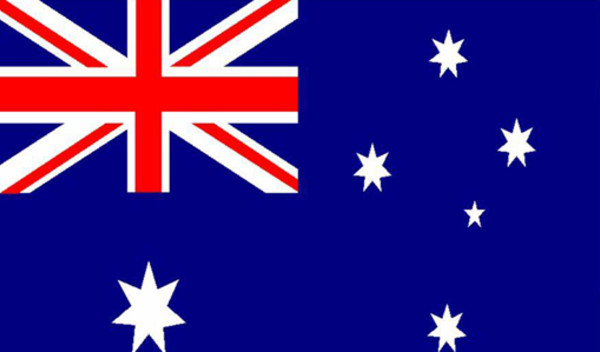

Over the past 10 years, the index has returned an annual average of 4.2 per cent. This growth has reflected a relatively high income component, exemplified by a five-year average dividend yield of about 4 per cent. Australia is the largest component of the index, at 58.8 per cent, so it is critical to understand how changing regional growth dynamics affect returns in its economy.
Asia has further integrated within global supply chains that have accordingly incorporated different markets. China has been a key driver of Asia-Pac growth by demanding inputs for export-led industrialisation. As China’s growth shifts toward domestic services consumption, Asia-Pac service sectors that make up most of the index should benefit.
This poses challenges for Australia and New Zealand, but there are also benefits. Tourism, healthcare and education should do well as China's middle class expands. For HK and Singapore, finance, trade and transport offer strong potential.
Australia
Australia represents more than half of the MSCI Pacific ex Japan Index, so its currency has contributed much to the benchmark’s total return. Understanding the country’s growth dynamics and its import/export role within the region is crucial. The country’s boom since 1992 is the longest in modern history. China’s demand for minerals has fuelled that growth. Unsurprisingly, China is Australia’s largest export market, accounting for 34 per cent of export income, with the total for Asia representing 80 per cent.
Although mining accounts for 75 per cent of Australian economic output, education, finance, healthcare and inbound tourism have represented more of exports since 2014. Diversification should continue as China's economy evolves. Australia’s economic boom has depended upon household consumption, with immigration driving fast population growth.
Key points
- Over the past 10 years, the MSCI Developed Pacific ex-Japan Index has an annualised return of 4.2 per cent.
- Australia represents more than half of the MSCI Pacific ex Japan Index.
- Asia-Pac markets offer more attractive growth than emerging Asia.
Hong Kong
Hong Kong is the second largest component, at 29 per cent, of the MSCI Developed Pacific ex Japan Index. It has long been the gateway for China’s trade. In 2015, financial services represented 17.6 per cent of Hong Kong’s GDP. Services should contribute more because much manufacturing has shifted to mainland China or Asean countries.
Expanding Chinese services demand should benefit the country. Integration through StockConnect and other initiatives should drive asset management and securities transaction services. Banking services alone increased 95 per cent from 2006 to 2015. China’s transition should thus shape HK’s growth dynamic.
Singapore
Singapore is 11 per cent of the MSCI Developed Pacific ex Japan Index. Its largest trading partners are China and Hong Kong. Manufacturing is more important for Singapore, at about 20 per cent of GDP in 2016, than for Hong Kong. Strong demand from China and globally for semiconductors and related components have recently boosted that sector.
Services, principally transport and finance, have started accelerating again this year. IT and information services and other communications should be key growth segments as Asian IT spending increases. In expanding industrial capacity, Asean economies are increasingly competitive in basic manufacturing sectors that China has dominated. Singapore can take advantage of this change as a regional gateway.
New Zealand
While New Zealand represents just 1.42 per cent of the MSCI Developed Pacific ex-Japan Index, its economy has expanded steadily over the past decade. It has benefited from exports to China, primarily in agriculture. Asia overall accounts for 50 per cent of exports. Strong domestic consumption and immigration have cushioned New Zealand's reliance on commodity export growth. The country is adapting to China's evolution by expanding its tourism, education and healthcare sectors. It also looks to bolster value-added agricultural exports for increasingly discerning Asian consumers. Overall, in Asia-Pac there are five growth themes.
1. Increasing tourism
Australia and Singapore should benefit from growing outbound China tourism. HK experienced an inbound tourism slowdown before numbers recovered in 2017. Overall, Chinese spending on tourism should reach $421bn (£318bn) in 2021.
2. Healthcare gains from demographics
Australia’s healthcare companies are well managed. Other Asia-Pac countries also have positive stories in medical infrastructure, including hospitals and medical equipment. Insurers should accordingly benefit.
3. Australian and New Zealand agriculture
Global demand for agricultural products is expanding amid increasing middle class incomes and consumer spending on food and beverages.
4. Rebounding commodity prices
As China’s economy evolves and demand slows for commodities, other demand sources are growing. The Asean region’s GDP should grow 5 per cent in 2017. India offers another source of demand. Supply should remain tight relative to demand.
5. Hong Kong banking
Hong Kong banks have suffered from declining US interest rates, affecting net interest margins and profitability. The country's financials in particular have benefited from the US Federal Reserve raising interest rates.
Markets
Asia-Pac markets offer more attractive growth than emerging Asia. The higher income component to Asia-Pac earnings and relatively larger sources of domestic growth have helped buffer Asia-Pac returns.
A focus on China and its increasing demand for services enables Asia-Pac to diversify and increase value-added goods and services.
China’s reductions in basic manufacturing capacity and coal production are accelerating industrial capacity in the Asean region. The rise of emerging Asian markets should flow through to Asia-Pac, particularly benefiting Singapore.
Ultimately, the risk appetites of investors will shape their decisions. Emerging Asia offers dynamic growth, but developed Asia-Pac offers more mature economies, established governance structures, and upside in value-added sectors driven by regional growth dynamics.
Peter Sartori is head of Asian equity at Nikko Asset Management



